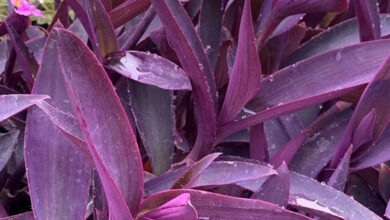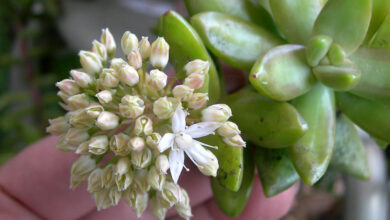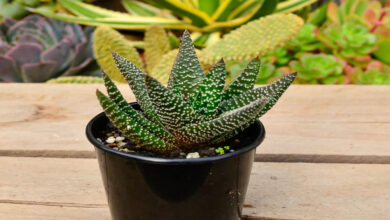Fuzzy succulent best choice for a home garden

Fuzzy succulent is used to add some extra beauty to your place due to their unique fuzz, fur, or long hair. While the fuzzy succulent leaves are okay to touch, keep your hands away from the furry-looking cactus! Most have strong spines in their hair. Furry succulents, on the other hand, are perfectly safe to touch or even pet. Even though judging the color of the leaf under the fuzz can be difficult, utilizing touch to monitor the health of these succulents is much more significant than with smooth succulents.
In general, fuzzy succulent care is similar to smooth-skin succulent care. Make sure you follow the following rules:
- Always plant in succulent soil that drains quickly.
- Select a container with enough drainage.
- Water thoroughly just until the succulent soil is completely dry.
- Give the succulent as much bright light as it can stand.
Although the succulent’s fuzzy leaves shelter it from the sun, don’t expose it to too much sun or it may sunburn. The best way to water fuzzy succulents is to put water at the soil line rather than from above. Try not to get the hairy succulent leaves wet. It can cause decay.
Fuzzy Succulent
Some succulents have microscopic hairs on their leaves, which can be short, long, very soft, or a little tougher depending on the species. Hairs, also known as trichomes, are more or less delicate plant parts that serve a variety of roles in plants.
The hairs of certain succulents, like the wax of many succulent leaves, are part of their adaptation to the environment, and their roles are diverse and even opposing. Among them may be preventing water loss from the plant or the ability to catch water from dew, protection against insects, or protection against high incidence of light on the surface of the leaves or poor weather conditions.
Let’s read about some amazing fuzzy succulents that are easy to grow.
Cotyledon tomentosa
Cotyledon tomentosa (Bear’s Paw or Kitten Paw) is a succulent shrublet native to Africa with a height of 30-70 cm and a diameter of 30-50 cm, depending on how thickly branched it is. This plant, like all tomentose plants, has down on its leaves, flowers, and stems. The grape- to thumb-sized leaves are plump and soft to the touch, exactly like a young animal’s fluffy paws, replete with scarlet toe nails. In the spring, it produces huge orange bell-shaped blooms.
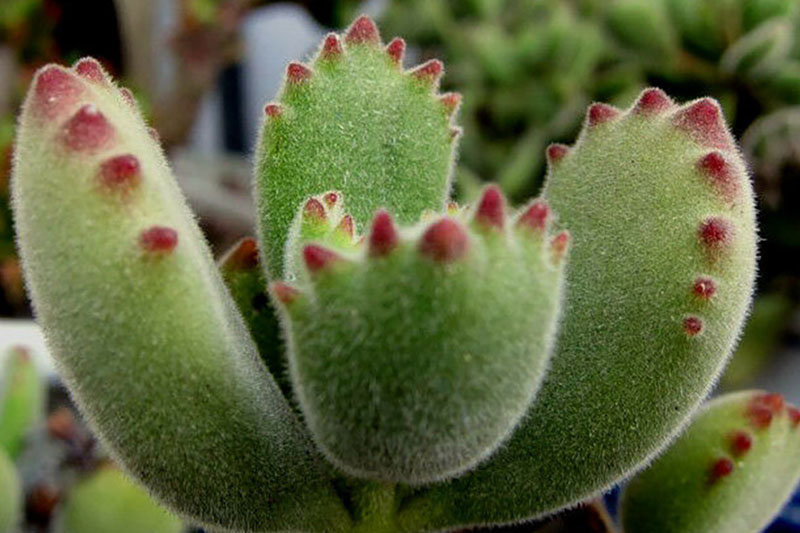
Crassula pubescens
This is a tiny semi-shrubby perennial succulent with deciduous leaves that grows up to 30(-70) cm tall in dense clusters. It has thin, brittle stems and hairy leaves. It is characterized by its decumbent to upright habit, rounded inflorescence, and petal appendages twice as long as broad and elongate-elliptic, with a cream to the pale yellow corolla. The pubescence varies greatly across specimens; in some, the hairs are extremely short and sparsely dispersed, while in others, they are thick, slightly tomentose, and even canescent. It has white fragrant flowers that bloom for months in the winter and spring.
Aichryson tortuosum
This is a tiny, extremely beautiful perennial shrublet 10-15(-20) cm tall with thick tortuous branches, thus the specific name. It has crowded, fleshy, and pubescent (downy) leaves in dense rosettes that resemble a small Aeonium lindleyi. The little yellow blooms on a loose inflorescence often have seven or eight petals. Sempervivum tortuosum is an ancient and well-known plant. It is highly variable, and, like with other Aichryson members, the genuine, unhybridized species is rarely encountered in culture.

Fuzzy succulent Crassula sericea
Crassula sericea (var. sericea) is a tiny perennial succulent subshrub that grows up to 20 cm tall, is heavily branched, and forms spherical spreading tufts. Its thickly hairy leaves, which are flat, relatively blunt, and have a brown edge, are borne at the extremities of the branches. Old plant stems can become woody and leafless. The petals feature prominent and conspicuous dorsal appendages. C. sericea is typically found in the wild in yellow-green forms, however, all forms of the plant are worth cultivation. Its foliage is variable, making it easy to mistake it for other species.
Sedum mocinianum
Sedum mocinianum is among the most appealing sedums. It is a succulent mat-forming perennial plant with dangling stems up to 80 cm long. Little white blooms with dark crimson anthers occur throughout the winter and in April in Mexico, which is always a nice sight. Sedum mocinianum is recognized by a thick coating of white hyaline hairs up to 0.5 mm long on all sections of the plant excluding the inside of the blooms.
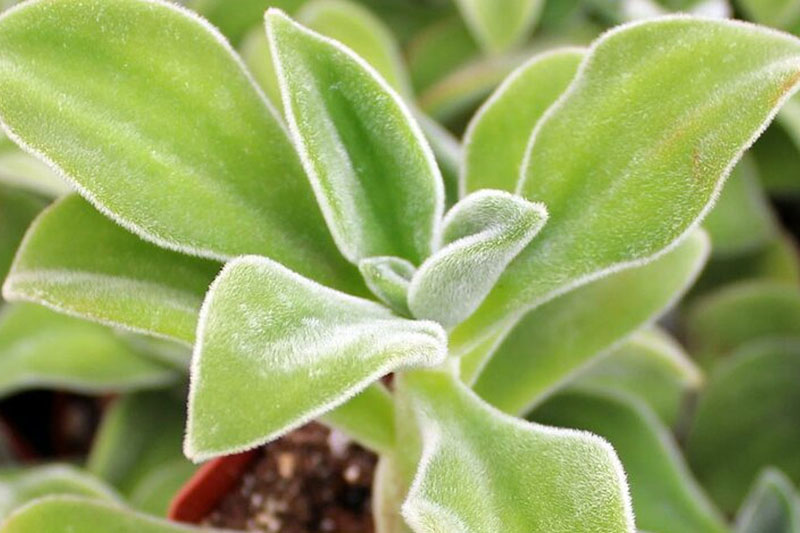
Echeveria coccinea fuzzy succulent
This is a succulent rosette-forming shrub that grows up to 60 cm tall and branches at the base. Initially upright, its stems prostrate and root into the earth to produce a spreading mound. Except for the interior of the blossoms, the plant is soft-pubescent. Comparable plants tagged E. coccinea differ significantly in stem and leaf form depending on clone and growing conditions, indicating that the species is quite variable in habitat and cultivation.
Crassula barbata
This Bearded Leaved Crassula is a biennial or perennial rosette-forming succulent plant that may grow up to a span high while flowering, with one rosette with spirally arranged leaves and old ones staying connected to stems. The leaves are glabrous but bearded around the truncate tip with long white spreading hairs. In the spring, spikes of tiny, white to pinkish blooms develop. The rosette will widen up as the center develops to produce the long flower stalk, and it will die after flowering. Fortunately, the dying rosette normally leaves behind a number of basal rosettes that may be removed and grown on to complete the cycle.
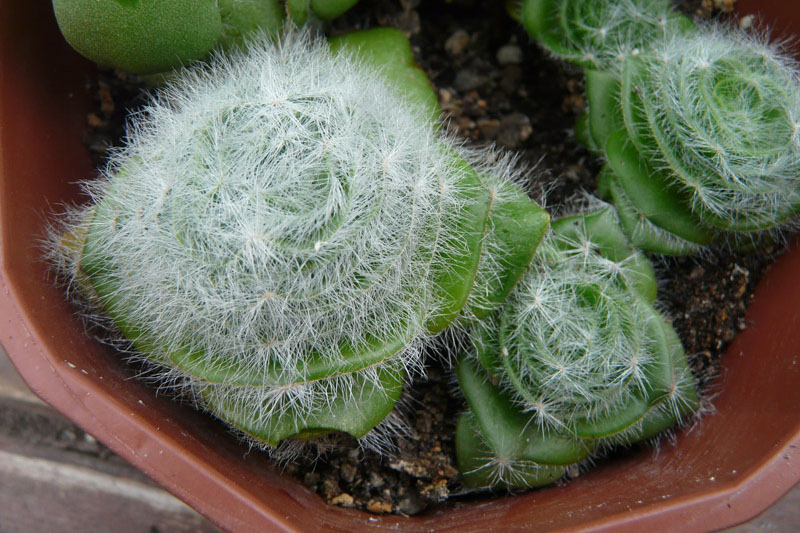
Crassula tomentosa
Woolly crassula a common name of Crassula tomentosa, is a perennial or biennial succulent with one to a few, rarely several rosettes of greyish green leaves to 60 cm tall (including the inflorescence). Everything is heavily covered in stiff, reflexed bristly hairs. It is monocarpic, which means that its individual rosettes blossom once, set seeds, and then die. This is an extremely variable plant with numerous slightly varied varieties (particularly in hairiness and leaf size and shape).
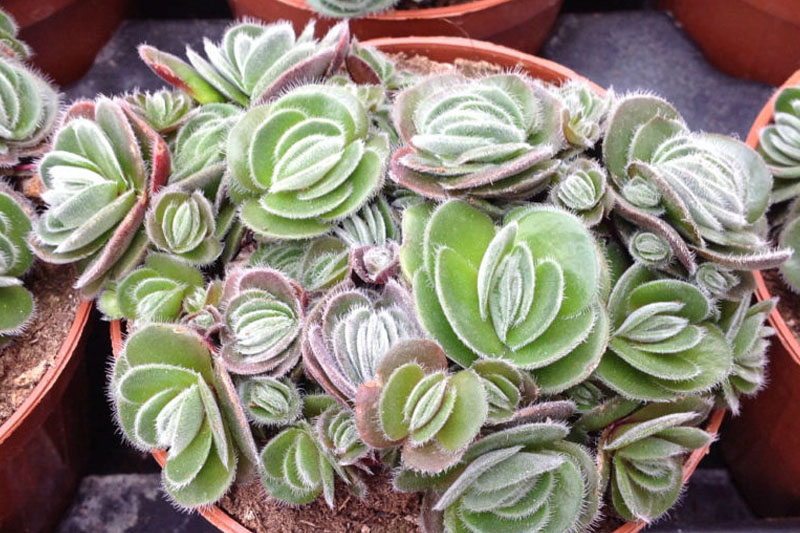
Crassula tecta fuzzy succulent
This is a tiny and lovely perennial plant with obtuse, greyish-green, thick leaves 20-30 mm long that are thickly coated with ash-colored papillae that resemble butterfly wing scales. It is slightly more succulent than other Crassula species. Growth is slow, but ultimately low compact clumps up to 5 cm tall and 6 cm broad grow, which are unlike any of the other crassulas. The inflorescence consists of a peduncle about 10 cm tall with a crown of numerous white flowers. C. tecta clones come in a variety of appearances.
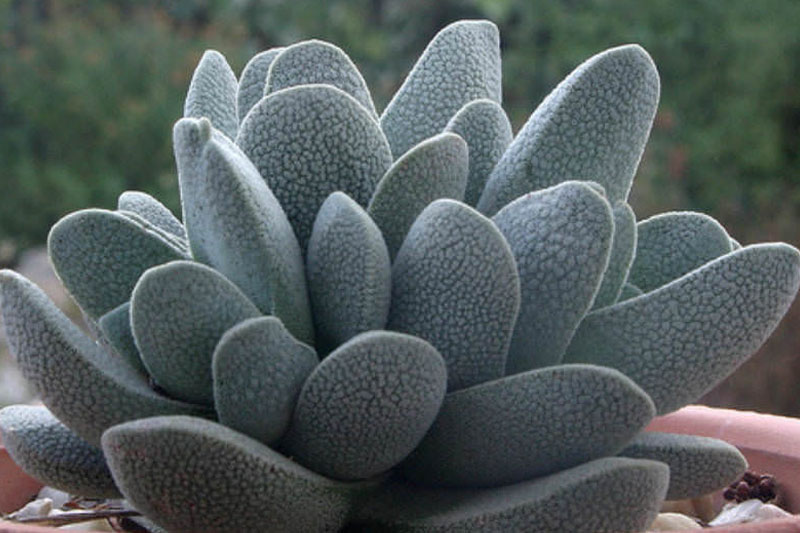
Sempervivum smithii
Aeonium smithii (also known as Sempervivum smithii) is a perennial deciduous, succulent shrublet that grows up to 60 cm tall. It has certain unusual traits that set it apart from other aeoniums. The leaves are only marked on the underside, and when they fall off, a row of stiff hairs remains along the lower border of the cicatrices. After the leaves fall, the hairiness rises and the stem becomes hispid (shaggy), while elder stems lose these hairs.
The leaves are spoon-shaped, undulated, and covered in soft hairs. They are deep green with red stripes on both sides, velvety to the touch, and glossy on the upper surface. It has an abundance of blossoms, with flower stalks reaching 15 cm above the rosettes of leaves.
Echeveria setosa
This is a rosette-succulent with nearly no stems that grow in thick mounds. It is a peculiar echeveria with exceptional pubescence, yet it is quite varied. Depending on the type, plants might be virtually glabrous or highly hairy with stiff, gleaming white hairs. It clusters easily, emitting offsets from the base and producing thick mounds with ease.

Crassula namaquensis
This is a 100 mm tall dwarf succulent shrub with a sturdy base & clusters of spirally arranged leaves. Because of the unusual hairs that are abundantly dispersed on the surface, these leaves look fuzzy and pale blue to blue-green. White flowers in a terminal head. It is similar to Crassula tecta.
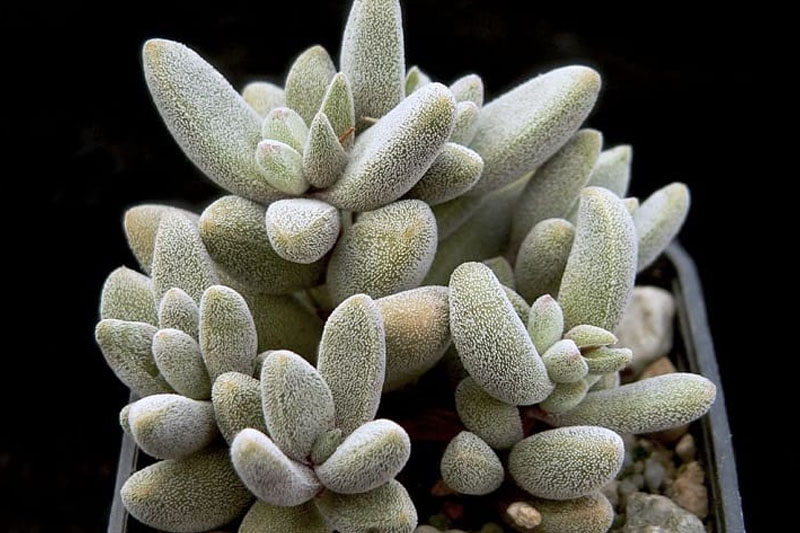
Crassula rogersii
This is a tiny, densely branching succulent shrub with fleshy red stems and club-shaped leaves. The leaves have a velvety look and a felt-like touch because they are coated in short white hairs. Crassula rogersii grows as a tiny, tight cushion up to 15-30 cm tall in its native environment. The plant stays green in shaded areas, but it thrives in bright sunshine when the leaves become crimson. From midsummer through fall, the tiny star-shaped blooms are kept in compact clusters at the end of slender stalks. This plant has a number of hybrids.
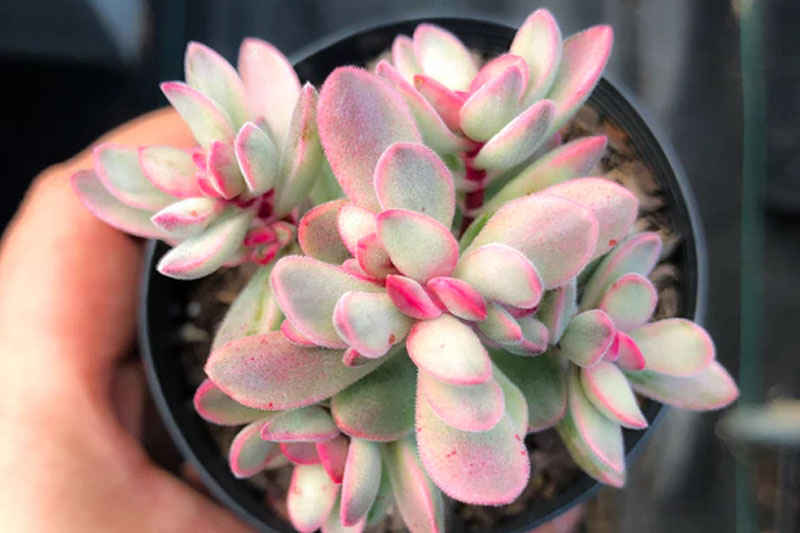
Crassula setulosa fuzzy succulent
This is a small to strong, perennial succulent plant that produces lovely miniature rosettes of fleshy, oval leaves that are edged with white microscopic bristles (leaf margins). It grows in thick cushions or mounds up to 40 cm broad and 5-10 cm high (25 cm in blossom), it is occasionally stoloniferous. In the summer, crimson buds open to reveal little white or reddish blooms. Flowers mature into little capsules that contain fine dust-like seeds.
The entire plant is normally covered in spreading bristles, however the bigger leaves are sometimes completely naked or simply covered on one side. This species is quite variable, particularly in terms of its leaves, which vary in size, shape, and hairiness with numerous different varieties or forms, some of which flow into one another, some of which are obviously simply variants without taxonomic importance. Crassula setulosa var. jenkinsii, Crassula setulosa var. deminuta, Crassula setulosa var. rubra, and Crassula setulosa var. longiciliata are the five identified variations.
Fuzzy succulent Crassula sericea
Crassula sericea var. velutina differs from var. sericea for its smaller size (less than to 15 cm tall including inflorescences), and decumbent to erect, sparingly branched growth. The stems are very short (usually less than 30 mm long) with larger flattened leaves with velvety hairs. Using a jeweler’s eyepiece the very tiny hairs appear dense and upright. The yellow pointed petals usually lack dorsal appendages.
If you are a succulent lover and looking to add some color to your green place then you can check out our article about Succulent with purple flowers for backyard will definitely make you happy.

